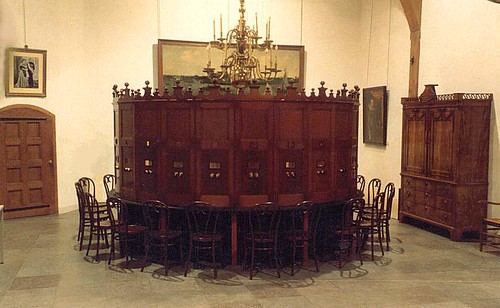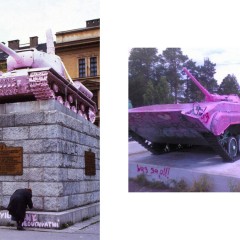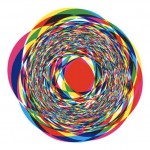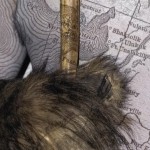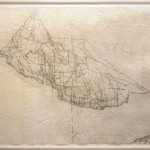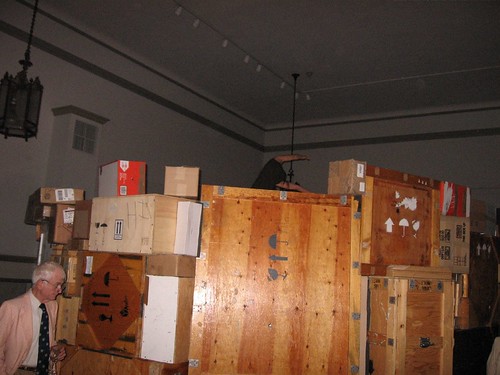
Amy Walsh and Blaine Siegel, Kaiserpanorama detail.
Before cinema and cinerama and I-Max and panorama cameras, there was the Kaiserpanorama, a sort of multi-peephole device with a stereoscopic slide show.
It’s sort of the opposite of painting panoramas, in which the person stands in the middle of a circular landscape, and can scan around, thereby taking in the impression of the space. Locally, there’s one out at the Gettysburg battlefield visitor’s center, depicting the battle. On the other hand, the Kaiserpanorama is a look inside and is closer to a television in concept.
It’s this tradition of panorama, and specifically the Kaiserpanorama, that Amy Walsh and Blaine Siegel are harking to in their one-week installation at Freeman’s, the venerable auction house on Chestnut Street in Philadelpha. Made of art shipping crates packed in a circle, the Kaiserpanorama’s crates are actually art shipping crates from the Philadelphia Museum of Art. But there’s even more art history packed into this pile-up, which reminds me of Pepon Osorio’s pile of suitcases and other family possessions piled high in his Trials and Turbulence installation at the ICA.
How did you get the crates? I asked them at the opening event last night. The two answered that they went up to the front door of the PMA and asked, after striking out at a couple of other places! Turns out, pine crates can’t be shipped again, because of some parasite that can take up residence in the pine if they’ve gone to Asia or Japan.
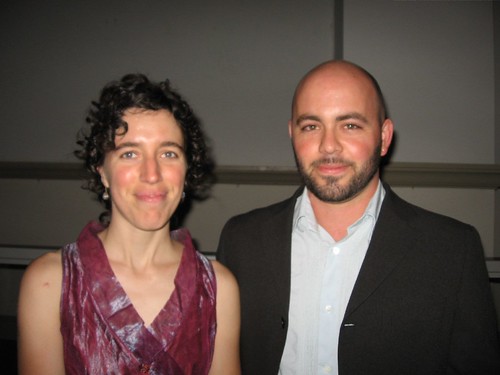
Amy Walsh and Blaine Siegel at the opening
So the PMA’s crate guy, David Gallagher, said they could have a bunch that the museum could no longer use. The artists drove a 16-foot U-Haul to a storage facility in Manayunk and loaded up.
The true Kaiserpanorama
What they found when they opened the crates back at the studio were foam packing materials and xerox images of what the crate was last used for–things like Brancusis, Jasper Johns, Rodin’s Thinker, and Eakins. Their hearts went pit-a-pat.
And it seems to me those art-treasure remnants hidden inside the crates is what this piece communicates. It also seems to me to be a first cousin to Duchamp’s Etant Donnee in the PMA, another peephole work. These days it’s hard to have a peephole kind of thing without having at least one dirty thought.
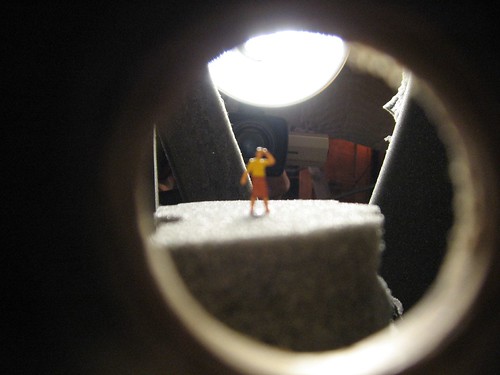
This peephole scene reminded me of paintings by Thomas Cole and by Thomas Eakins.
Inside the peephole are scenes, some of which I recognized, some I did not, as having art historical references. A figure on a rocky ledge reminded me of paintings by Thomas Cole and by Thomas Eakins. A kinescope-like or magic lantern moving image reminded me of Muybridge and a Tom Chimes’ white portrait of Jarry all at once.
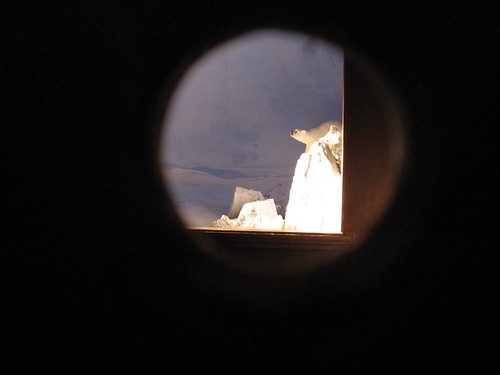
This peephole scene reminded Andrea Kirsh of Frederic Church’s sublime iceberg paintings
Our correspondent, Andrea Kirsh, who was standing near me at another peephole, called out Frederic Church’s Icebergs. But this particular little illusion inside the box has a hole punctured in the backdrop. There’s a sense of the provisional in all of these peepholes. The infrastructure shows through. The ravages on time on treasures are there. And the art-historical crates themselves are also infrastructure.
My favorite peephole had receding train tracks with all kinds of crazy underground crumbling buildings above the tracks. I find this exploration of the guts of construction gone bad to be such a sad–and fearful–theme. My mind goes immediately to our society in ruins, our proudest moments laid bare of their artifice.
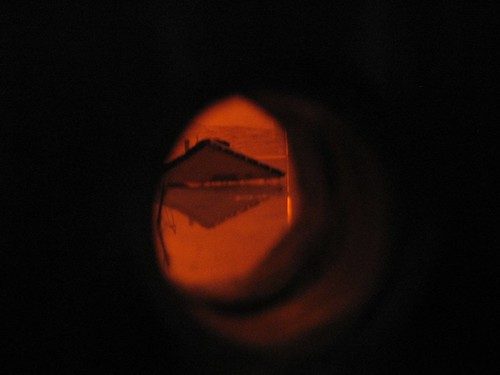
Another bonus of being there opening day was a dancer emerging from atop the structure and briefly performing a sad little dance of yearning (think Jules Feiffer). I also got to see a number of the students Roberta and I had talked to at Jennie Shanker’s class at University of the Arts two days before–hi, you all.
It has been a year since Walsh won the opportunity to show at Freeman’s as a prize on her graduation from PAFA, where both she and Siegel earned BFAs. After graduation, the two of them and three others joined together for studio space. “I wanted to extend the graduate school experience,” Walsh said. Then, in March, with this opportunity approaching at Freeman’s, she asked studio-mate Siegel to work with her. The rest is panorama history.
Last year, we saw terrific work of theirs at Slought (posts here and here). I’m looking for more work from these two artists.


